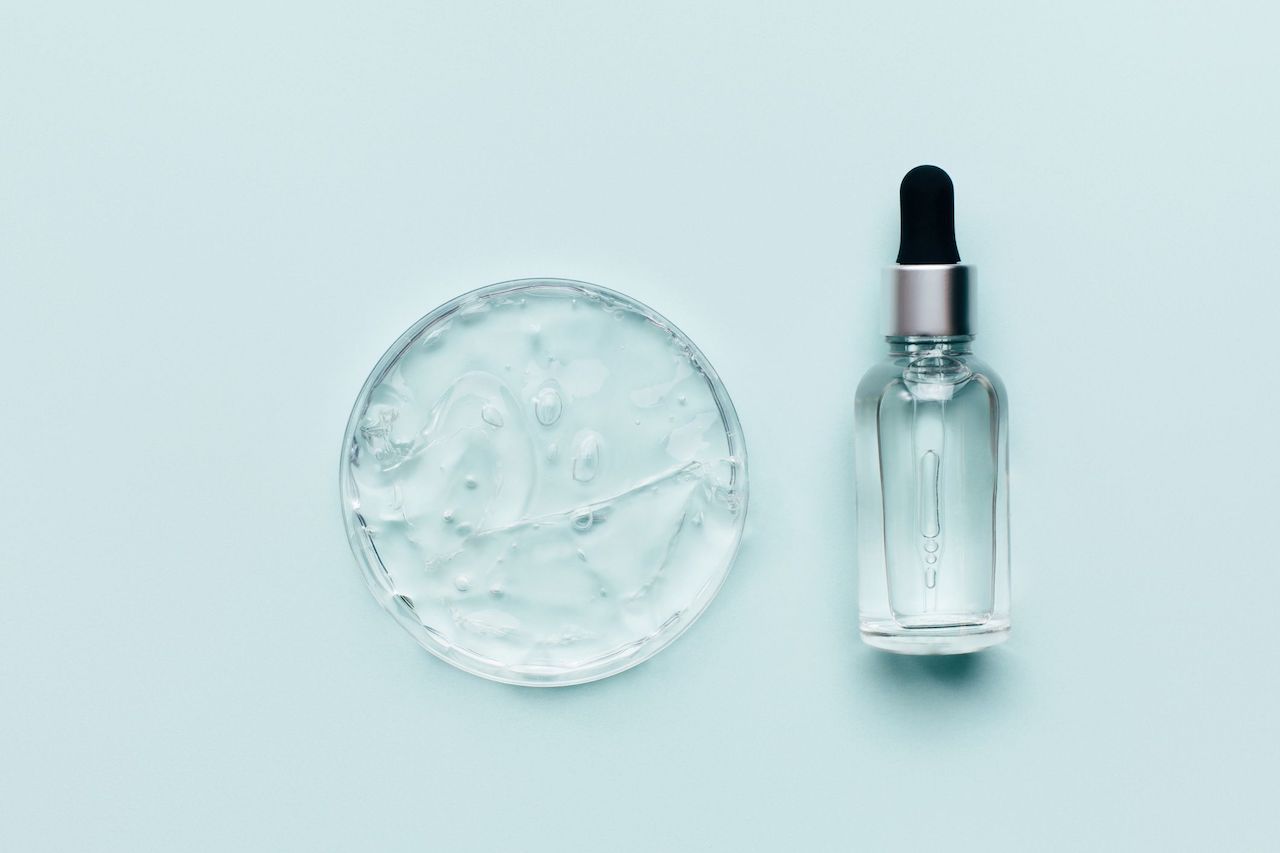Ethylhexylglycerin is one of the many items on an ingredient list that your eyes might glaze over because of its complicated-sounding name. While the ingredient may not be something you are familiar with, ethylhexylglycerin has as many uses in beauty formulations as it does consonants, so you are most likely already using products with this ingredient. Ethylhexylglycerin can act as a surfactant, preservative, deodorizer, and conditioning agent.
Meet the Expert
- Kristina Collins, MD, FAAD, is a board-certified dermatologic surgeon and the co-founder/CEO of Austin Skin.
- Shari Sperling, DO, is a board-certified dermatologist and founder of Sperling Dermatology.
Ethylhexylglycerin has proven benefits in the formulation of beauty products and provides conditioning to hair and skin as well. It is considered a naturally derived and less toxic alternative to parabens or sulfates, which are often found to be irritating.
What Is Ethylhexylglycerin?
Ethylhexylglycerin is a vegetable glycerin preservative that can be obtained from animal sources, but mainly comes from plant-derived sources of glycerin, such as soybean or palm.
However, some users have reported contact allergic reactions to ethylhexylglycerin as well. We turned to dermatologists Kristina Collins, MD, FAAD, and Shari Sperling, DO, for their thoughts on ethylhexylglycerin. Read ahead to hear what they had to say.
Ethylhexylglycerin for Hair
Type of ingredient: Surfactant, preservative, and conditioning agent
Main benefits: Cleanses scalp and hair, stabilizes hair products, prevents bacterial growth, and conditions hair and skin
Who should use it: In general, anyone can use products containing ethylhexylglycerin, but those with dry or curly hair may see more benefits due to its conditioning factors. It can also be a great option for those with sensitivity to parabens or sulfates.
How often can you use it: It’s safe to use up to two times a day, morning and night, as it is found in many shampoos and conditioners. However, those with sensitive or dry scalps may want to limit their use of surfactants.
Works well with: Any water-based skin care or cosmetic products, in order to prevent bacterial or fungal overgrowth and ensure product safety
Don’t use with: There are no known ingredients that negatively interfere with ethylhexylglycerin. However, those with sensitive or reactive skin may experience irritation.
Benefits of Ethylhexylglycerin for Hair
Ethylhexylglycerin has become a popular alternative for parabens and sulfates in hair and skin products. Dermatologic surgeonn Kristina Collins, MD, explains that the beauty industry is always looking for safer, cleaner, and less toxic ways to safely preserve products for topical use. Preservatives are necessary for any water-based skincare or cosmetic products in order to prevent bacterial or fungal overgrowth and ensure product safety. “Ethylhexylglycerin is appealing to use in this way because it is naturally derived and less toxic,” she adds. Dermatologist Shari Sperling, MD, agrees, adding that parabens have traditionally been used but have been associated with contact allergies, while ethylhexylglycerin has rarely caused allergies.
In addition to its benefits in haircare product formulations, ethylhexylglycerin has two key benefits to the hair and scalp. The first is its ability to condition the hair and skin, not unlike the similarly infrequently mentioned xanthan gum. The second is that it does function as a surfactant, making it an effective yet gentle cleanser for the scalp and hair. Sperling explains that surfactants work in solutions to prevent oil and water from dispersing.
- Stabilizes hair products: Ethylhexylglycerin is a natural preservative that helps to ensure beauty products do not spoil or separate between production and purchase by the consumer. It is especially helpful in water-based formulations. “The presence of ethylhexylglycerin provides antimicrobial action to help maintain safety of the product and prevent the growth of bacteria, mold, or fungi,” shares Collins.
- Gently cleanses scalp and hair: As a surfactant, ethylhexylglycerin will attract oil and grime from the scalp so that it can be washed away, says Collins. It provides a gentle cleansing that removes impurities without stripping the hair and skin of moisture.
- Conditions the hair and skin: In addition to cleansing the hair and scalp, ethylhexylglycerin can provide, and lock in, moisture. Collins explains that it is derived from glycerin, which makes it a great conditioner.
- Improves overall scalp health: An imbalanced scalp can lead to a host of issues for the skin of the scalp as well as the hair. Overly-stripping cleansers can actually promote more oil production, and dry, flaky scalps can cause itching and hair loss. The combination of cleansing and moisture provided by ethylhexylglycerin promotes a balanced scalp environment.
- Softens and smooths hair: Sperling says that ethylhexylglycerin has been used in hair products to help soften the hair, because its hydrating benefits make hair appear smoother.
Hair Type Considerations
Our experts agree that ethylhexylglycerin is safe for all hair types, including curly, dry, and color-treated hair. If you’re looking for a solution for cleansing without stripping hair of color or natural oils, ethylhexylglycerin may be just what you’re looking for. The conditioning factors of ethylhexylglycerin would provide the most benefit to those with dry or frizzy hair. Additionally, those who are vegan may need to ensure that any products containing ethylhexylglycerin are derived from plant sources before use, as sometimes the ingredient comes from animal sources.
Both experts say this ingredient can be a safer alternative to parabens or sulfates, which have a much higher potential for irritation. However, there have been some contact dermatitis reactions to ethylhexylglycerin, so a patch test should always be completed before using a new product. Those with known contact dermatitis reactions to other ingredients may want to steer clear of ethylhexylglycerin. “This ingredient may cause contact dermatitis for susceptible individuals and can be a source of skin irritation or rash in ‘hypoallergenic’ products for the small percentage of people affected,” explains Collins.
How to Use Ethylhexylglycerin for Hair
After learning about ethylhexylglycerin, it’s easy to see why dermatologists and beauty brands alike are fans of this powerful preservative. While you may not be able to easily purchase ethylhexylglycerin on its own, it can be found on many ingredient lists of products you may already own. If you have previously had issues with or want to avoid parabens or sulfates, consider looking for products that use ethylhexylglycerin instead of the more controversial ingredients.
Xanthan Gum Is in Almost Every Hair Product—But What Does It Do?










